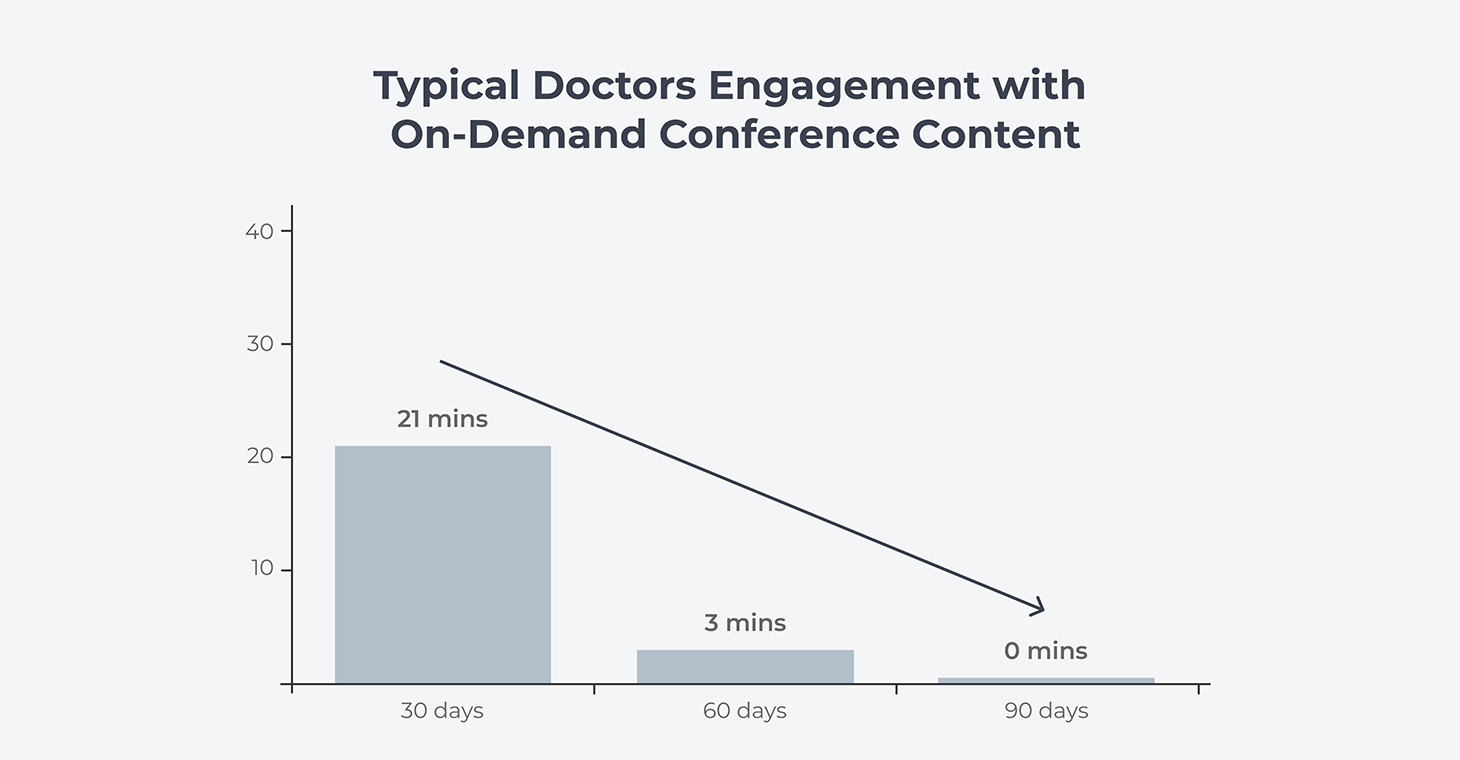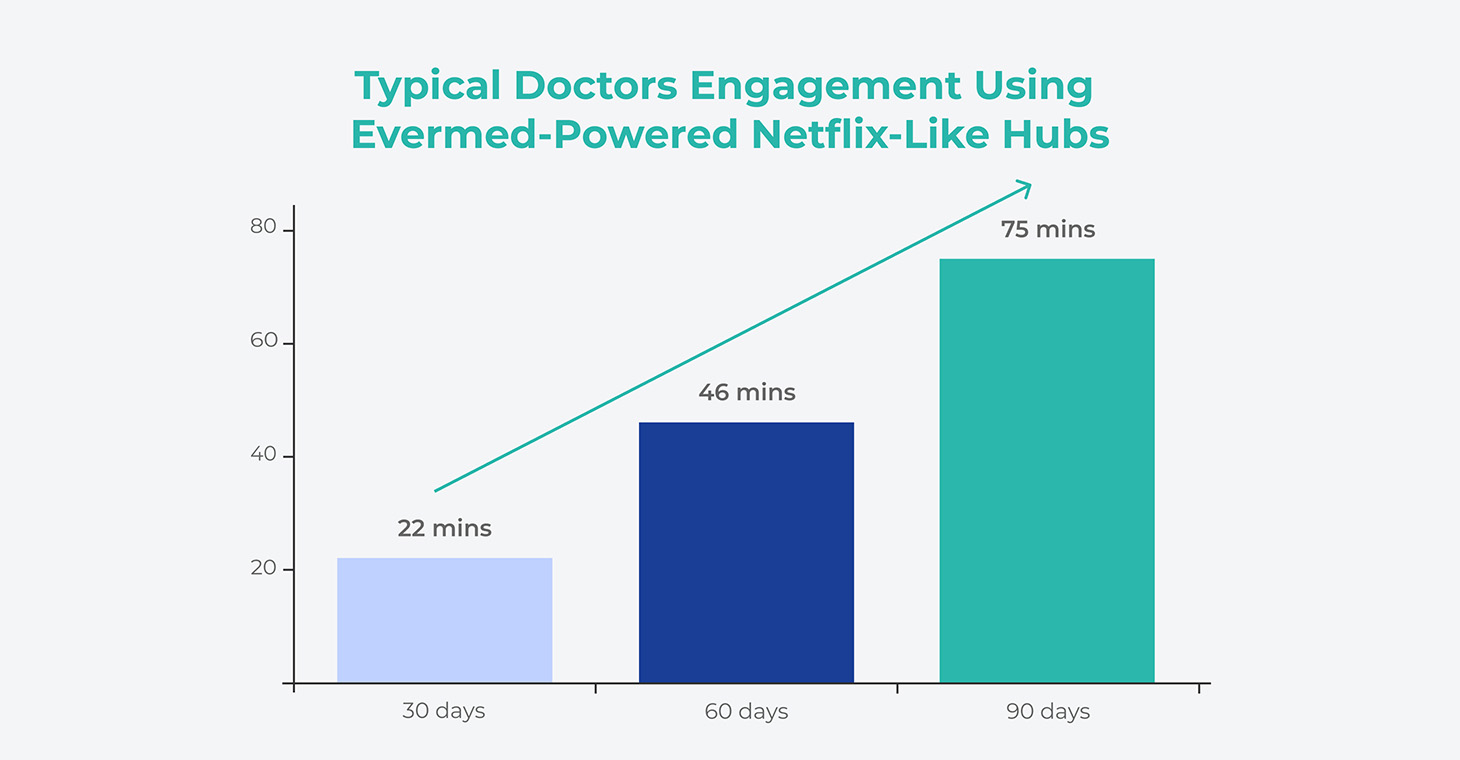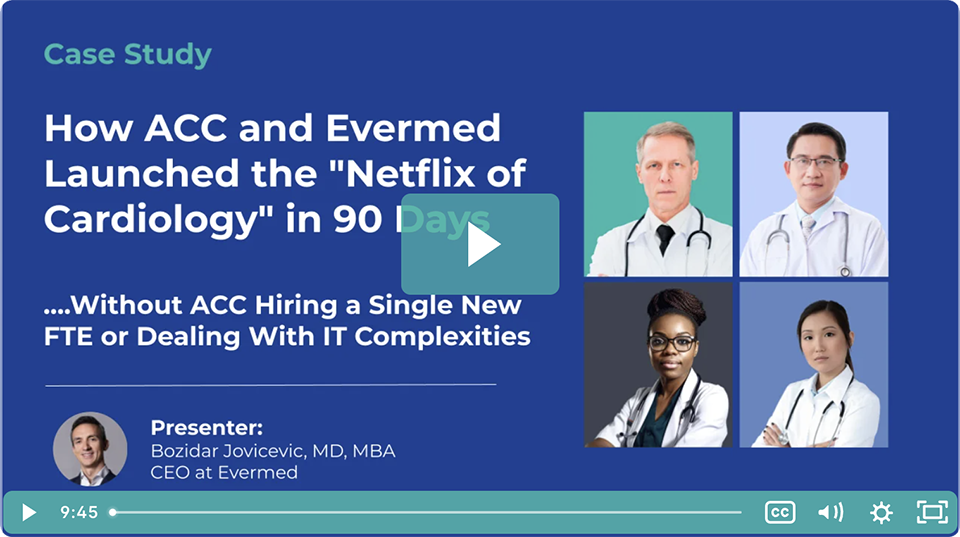Medical societies are sitting on a goldmine existing on-demand conference content.
That goldmine is unfortunately failing to generate engagement or new revenues at the moment...
Before I get ahead of myself, here is a common scenario when it comes to on-demand conference content:
- #1 Some of the doctors buy access to on-demand conference content
- #2 They log in once or twice over the 30-day period => get frustrated with a clunky user experience and inability to easily find content they want => leave and never log back in again (100+ hours of credible, fresh, on-demand content goes to waste within a month...)
- #3 Society executives start to believe that the reason for such lack of doctors engagement with the content is that "content becomes old fast"...

Our data shows the exact opposite - if the content is presented in the right content experience (Netflix-like), and is actively curated throughout the year, the engagement grows month after month, even with 6 month old content.

What’s the reason for this stark difference?
If you are a society executive wondering why the value of on-demand conferences goes to zero within 30 days and what you can do to reverse it, read on.
If you want to learn how to generate new revenues for your society using your own Netflix-like content hubs, click the button below to find out how.
Medical societies have been slow to adapt to the on-demand needs of doctors, despite the potential to provide ongoing, year-long value to doctors and other healthcare professionals. There are three main reasons for that:
Reason #1: Clunky, LMS-like user experience
The value of a great user experience cannot be overstated.
A well-designed, intuitive platform makes it easy for users to find what they are looking for, access the information they need, and interact with the content in a meaningful way.
However, on-demand conference content is usually delivered to doctors through a legacy, LMS-like user experience, requiring multiple clicks.
This leads to frustration and confusion for doctors, who often give up on trying to engage with the content.
The final result is decreased engagement and a lack of motivation to use the platform, which can result in a missed opportunity for both the provider of the content and the users who are seeking it.
By investing in a great user experience, medical societies can improve the value of their on-demand conference content, engage doctors all-year-round, and generate new revenue opportunities.
Reason #2: Lack of effort to actively curate content for doctors throughout the year
Personalized content recommendations à la Netflix can help drive engagement by suggesting content that is tailored to each individual doctor's interests and needs.
This type of targeted content recommendation can help keep doctors engaged with the platform over time, driving repeat usage and increasing the overall value of the on-demand conference content.
By leveraging technology to provide personalized, curated content, medical societies can create an engaging and effective platform that provides ongoing value to their members and drives better health outcomes for patients.
However, most societies simply provide access to the doctors who paid for on-demand content and never try to help doctors engage with the content...
In most cases there is no system in place for curating the content, or for helping busy doctors find the information they need quickly and easily.
This leads to a rapid decrease in content usage within the first 30 days.
Reason #3: Content is not repurposed for on-demand consumption
Most societies record the individual presentations (or sometimes even hour-long sessions) and put them as such on their LMS.
This can make it difficult for doctors to quickly find the information they need, especially if they are looking for specific topics or insights.
Repurposing long-form video content can make the content more accessible and usable for busy doctors who may only have limited time to spend on the platform.
For example, by splitting long videos into shorter chunks, doctors can easily find and access specific segments that are relevant to their needs.
Additionally, creating attractive thumbnails can help entice doctors to engage with the content, making it more likely that they will watch the video and gain value from it.
By making the content more visually appealing and easily digestible, medical societies can encourage doctors to spend more time on the platform, gain a deeper understanding of the topics covered and have better retention of the information presented.
If you want to learn how to generate new revenues for your society using your own Netflix-like content hubs, click the button below to find out how.
In conclusion, medical societies and their doctors are missing an opportunity to engage HCPs all year long with their on-demand conference content due to legacy user experiences, lack of effort to actively engage doctors with the content, and lack of content repurposing.
By making the content more accessible, usable, and engaging, medical societies can help doctors stay up-to-date, engage them all-year-round, and generate new revenues.
CASE STUDY
How ACC and Evermed Launched the "Netflix of Cardiology" in 90 Days



